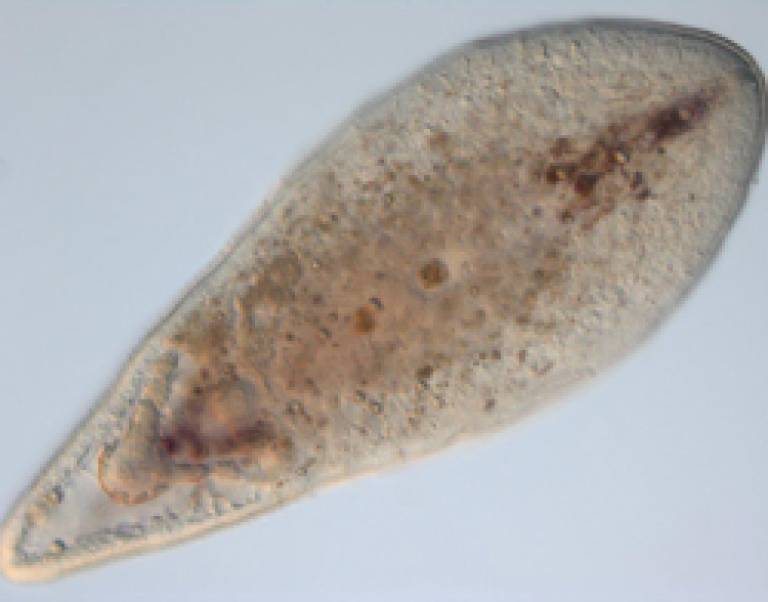Simple marine worms distantly related to humans
10 February 2011
Links:
 ucl.ac.uk/iris/browse/profile?upi=MTELF77" target="_self">Professor Max Telford
ucl.ac.uk/iris/browse/profile?upi=MTELF77" target="_self">Professor Max Telford
Two groups of lowly marine worms are related to complex species including
vertebrates (such as humans) and starfish, according to new research.
Previously thought to be an evolutionary link between simple animals such as
jellyfish and the rest of animal life - the worms' surprising promotion implies
that they have not always been as simple as they now appear.
Although the marine worms Xenoturbella and Acoelomorpha are very simple animals
- they lack a developed nervous system or gut - they have been a source of much
debate among zoologists. Acoelomorphs were reclassified in the1990's as
an early branch of evolution - the crucial link between the very simplest
animals such as sponges and jellyfish and the rest of the animal kingdom
including humans, starfish, insects and molluscs.
Now, in research published online today in Nature, an international team lead
by scientists from UCL (University College London) and the Université de
Montréal have shown that neither type of worm is an early branch of evolution.
They show that both groups descended from the same ancestor that gave rise to
the complex groups of animals that includes vertebrates and starfish.
This implies that the worms have in effect 'evolved backwards' into much
simpler looking organisms.
Specimens of Xenoturbella were collected from the mud at the bottom of a
Swedish fjord where it eats bivalve molluscs; the acoelomorphs are found in
various marine environments - one called Meara stichopi even makes its home in
the throat of a sea cucumber. Scientists compared hundreds of genes from
both Xenoturbella and the Acoelomorpha with their counterparts from a whole
range of animal species to determine their evolutionary relationships.
The results show that the two groups constitute a newly classified phylum (a
major division of life), which the authors name the 'Xenacoelomorpha'.
The xenacoelomorph phylum joins the three known phyla of deuterostomes:
vertebrates (including humans), echinoderms (e.g. starfish) and hemichordates
(acorn worms).
Professor Max Telford, from the UCL Department of Genetics, Evolution and
Environment, and joint leader of the research said: "Because the simple
Xenacoelomorpha are descended from the same ancestor that gave rise to complex
groups such as vertebrates, echinoderms and hemichordates, these simple worms
must have lost a lot of the complexity that they originally possessed."
Professor Telford said: "We can no longer consider the acoelomorphs as an intermediate
between simple groups such as jelly fish and the rest of the animals. This
means that we have no living representative of this stage of evolution: the
missing link has gone missing!"
Professor Hervé Philippe from the Université de Montréal said: "This is
the happy result of a more than ten year struggle with these highly unusual
organisms that have proved very difficult to locate on the tree of life.
Improvements in DNA sequencing technology and in mathematical methods to infer
evolutionary history were key to solving the conundrum of Xenoturbella and the
acoelomorphs"
Image: An example of an Acoelomorpha worm, credit: Dr Bernhard Egger, UCL
Media contact: Clare Ryan
UCL context
UCL Research Department of Genetics, Evolution and Environment brings together scientists with shared interests in
genetics, evolutionary and environmental biology. It traces its origins
to the Department of Comparative Anatomy, founded in 1826 and
incorporates the Galton Laboratory. Current research at the Department
includes evolutionary and environmental biology, genetics including
human genetics, and systems and theoretical biology.
Related news
When pouched carnivores ruled the animal kingdom
Energy revolution key to complex life
 Close
Close

